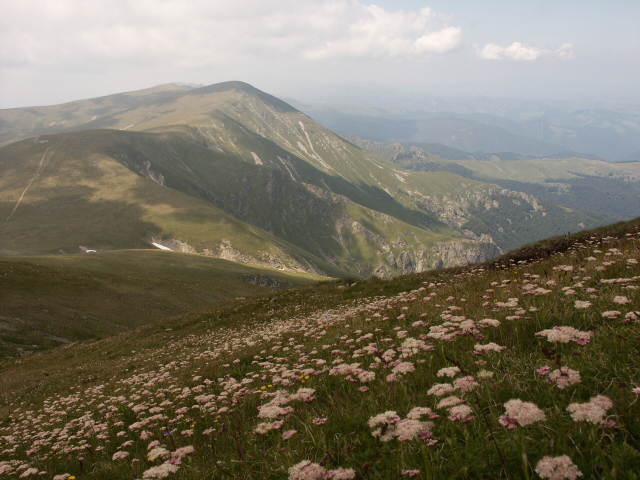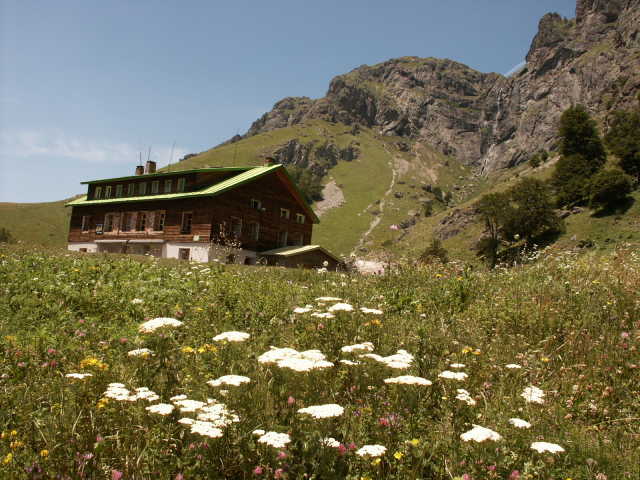Central Balkan: Making money grow on trees

Tourism is big business in Bulgaria, and business is booming on the Black Sea coast. But as seaside villages disappear under a plethora of hotels and tourists complain about the ubiquitous construction works, the industry could be in danger of becoming a victim of its own success. SASHA GALITZKI looks at a more sustainable option for tourism in Bulgaria.
LATE in the afternoon of Wednesday October 12, I arrived in Ribaritsa, a small community nestled in a valley of the Central Balkan Mountains. I joined over 50 experts from 15 different countries as I checked into the conference entitled Developing Economic Benefits of Protected Areas and Ecotourism. Over the next two days, we would discuss the role of ecotourism in sustainable development.
Examining forested areas in particular, we studied how conservation can maximise ecological, social, and economic benefit. We found that by caring for natural areas, we can not only preserve their beauty and biodiversity, but also contribute to the long-term economic and social wellbeing of local communities.
Conservation and ecotourism
Many of the most significant trends in tourism worldwide point to the high potential of ecotourism development. Tourists around the globe are becoming more and more interested in activity and experiential/learning holidays. Although many tourists will never want more than a sunny beach and a cold cocktail, more and more are looking to diversify their tourist experience and reap some kind of physical or intellectual gain from their holiday.
In addition, tourists are becoming increasingly aware of global environmental conditions. The more they learn, the more interested they become in nature and the more concerned they become with conservation. Tomorrow’s tourists will not only want to travel to natural places; they will want to know that what they see is being taken care of. Ecotourism attractions are appealing precisely because they have been well preserved. Dr. Rachel Dodds, a sustainable development expert and one of the key speakers at the conference, noted that “unless you conserve the place you’re bringing tourists to, you won’t have any place to bring them in the future.”
Bulgaria’s many natural and cultural attractions – most relatively untouched – have considerable potential as the foundation of a strong and profitable ecotourism industry. “I think ecotourism is one of the best ways for Bulgaria to diversify its tourism industry and become more competitive worldwide,” said Dessislava Milhalkova from the Executive Agency of Tourism. In order to provide for long-term economic, social, and environmental sustainability, however, Bulgaria’s attractions must be well preserved and responsibly managed.
Central Balkan National Park
Central Balkan National Park is just one example of Bulgaria’s ecotourism potential.
It is an area of immense natural beauty and biodiversity, and considerable steps have been taken to ensure its long-term sustainability. Part of the conference included a short field trip to the Park. Packed into a bus, we wound uphill along a creek to an old hunting lodge that has been converted into an inn and a base for exploration of the park.
Happily disembarking from the bus, we entered the forest for a short hike. The rain clouds that had been pouring on us earlier that day cleared, and the sun’s rays shot through the branches above us to make the carpet of fallen leaves beneath our feet glow yellow and orange. We walked through an old growth stand of beech trees, some of which were over 250 years old.
Birds chirped as they zoomed through branches above us, their feathers fluttering brightly whenever they passed through sunbeams. The many bird watchers in the group made very little progress in the hike as they kept stopping to admire the wealth of birdlife. The many foresters in the group moved slowly as well, squinting up at the crowns of the trees, feeling bark and leaves and identifying the many species we walked among. Everyone stopped to form wide circles around several fire salamanders that crossed our path. Their bright yellow spots blended in well with the colorful autumn leaves they crawled along.
Halfway through our hike we gathered in a big circle around the director of the Park to learn more about the area we were exploring. The Central Balkan National Park was established in 1991 to conserve the unique natural scenery and heritage of the area and protect the customs and livelihood of the local population.
The Park contains rare and endangered wildlife species and communities, self-regulating ecosystems of biological diversity, as well as historical sites of global cultural and scientific significance. Although it covers only six per cent of Bulgaria’s land area, over half of the flora and fauna of the country have been identified within the Park. Over 130 plants and animals found in the Park are listed in the World Red Book of Endangered Species, and twelve species are found nowhere else in the world.
As such, the Park is one of the largest and most valuable protected areas in Europe. The Park and eight of its nature reserves are on the UN List of Representative Protected Areas, and four of its nature reserves are included in the World Biosphere Reserves Network under the UNESCO Man and Biosphere Program. The Park has recently become a member of the PAN Parks European Network.
Despite widespread international recognition of the Park’s significance, however, domestic awareness is still developing. Just six years ago half of the people living around the Park had never heard of it. Following steps to raise its profile with visitors and local residents, a recent study revealed that now 90 per cent of locals are aware of its existence and most know where its borders lie. The number of locals expressing an interest in developing ecotourism has doubled over the same period.
Visitor numbers are also on the increase. During the study, half of the Park’s visitors were there for the first time, powerfully illustrating the potential for growth. Nearly 90 per cent of people spending their holidays in its environs had either visited the Park or intended to do so. This growth in local ecological literacy is vital for the development of effective and truly sustainable preservation, management, and habitat restoration programmes.
Nature reserves: the bigger the better
Larger parks such as Central Balkan National Park are home to much greater biodiversity than smaller natural reserves, which cannot support full ecosystems. In order to best preserve biodiversity, a park must be big enough to encompass all aspects of it. Thus, larger parks not only maximise conservation efforts, but also indirectly increase the potential for ecotourism and economic development.
As evidenced by our own behaviour in the Central Balkan National Park – oo-ing and ah-ing over the birds and animals – it is clear that wildlife is often the most popular tourist attraction in natural areas. Reserve areas that are too small to support full ecosystems have much lower biodiversity than larger areas, and thus fewer attractions for tourists. Thus, large forest conservation sites – of the order of 100 square kilometers or more – are best for both conservation of rare species as well as for local economies.
“Creating forest conservation areas is often believed to lose money because of the loss of timber revenue, but protected areas can also generate jobs and income,” said Marcus Walsh, Chairman of BirdLife International’s Forest Task Force, the NGO that organised the conference. “Numerous examples around Europe and elsewhere have demonstrated the popularity of large protected forest areas such as national parks. These sites generate far more income through their visitors than would the value of their timber. Large sites can tolerate more visitors while still maintaining the integrity of their natural values; at the same time, we know that larger protected areas are usually more important for biodiversity protection than smaller ones, because they can support larger populations of rare species.”
“Creating large protected areas is therefore a potential win-win situation for both biodiversity and local people,” continued Walsh. “We know from recent scientific advances that preserving the species-richness of Europe’s forests means protecting considerably more forest than is currently the case, leaving it aside from timber production to develop in a natural state. This can also make sound social and economic sense, if such issues as sustainable tourist development are taken into account from the early planning stages. Regrettably, this does not always happen, because environmental and forestry officials are seldom experts on social and economic issues. It is important to involve a wide cross-section of stakeholders, such as nature tour operators and service sector employment experts in the protection planning process right from the start”. The conference incorporated just such a cross-section.
Dr. Dodds, one of the key speakers at the conference, said that tourism was expected to generate 221 568 jobs in 2005, or 8.3 per cent of the global total, and an increasing proportion of this is in sustainable tourism. She adds that there is, on one hand, increased demand for learning experiences and thus increased visiting of parks and protected areas and, on the other hand, longer term benefits from tourism than hunting or forestry. When all of these factors are considered, it becomes clear that preservation and restoration of wilderness areas is of much greater long-term value than the unsustainable exploitation of products that they may contain. “Tourism is making money,” concluded Dr. Dodds, “ecotourism is making money with a conscience.”
Make an investment! Choose Central Balkan area!
read more articles
